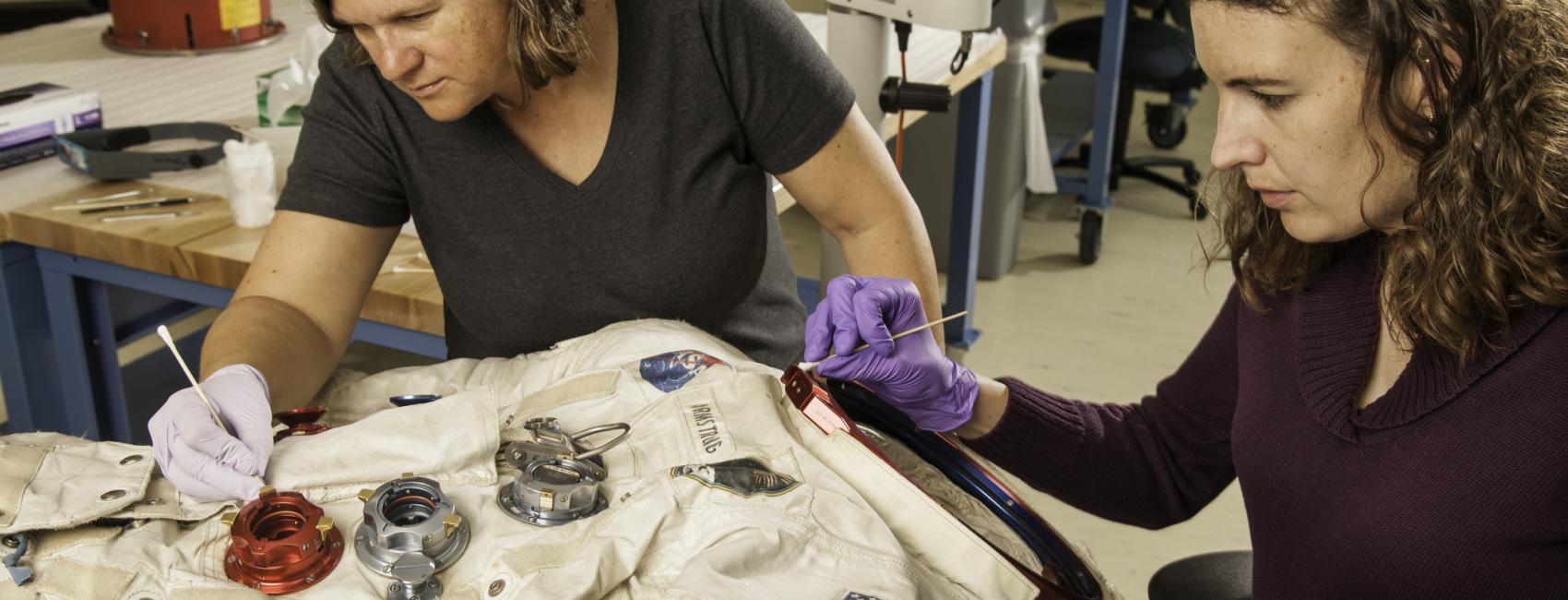
Apr 13, 2012
By Tim Grove is Chief of Education for the Museum in Washington, DC.
What is the first question most people ask about spaceflight? “How do you go to the bathroom in space?” It’s a puzzlement. The Education staff has decided to seize a teachable moment. The new Moving Beyond Earth exhibition will feature a full-scale reproduction space shuttle mid-deck, the shuttle’s living quarters. Visitors will be able to open some of the lockers, look out the portal for a heavenly view, and yes, see a reproduction space toilet, or WCS (waste containment system).
This past week we unpacked the toilet and had training. Why training? Because we plan to roll it out, turn it on, and present short educational programs. We’re expecting a lot of interest. We know you're curious.
When we move a lever, the vacuum turns on. In space, astronauts rely on air to do what water does on Earth. Waste is sucked away, compacted, and dried. Of course the whole process is much more complicated than here in Earth. The feet straps (or bar for a standing man) are very important, as are the thigh bars for those sitting. Some models even come with seat belts! Astronauts do not want to float away while doing their business. There are male and female funnels, hoses of different sizes, and a can for paper trash. Remember, no flushing takes place. Ensuring a proper seal is crucial and astronauts practice on a toilet with a camera in Houston to perfect their position. The company that built our WCS cared a great deal about accuracy, down to the NASA logo clearly emblazoned on the side. And, in case you were wondering, our space shuttle curator Valerie Neal made sure that Space Shuttle Discovery, coming in April to the Museum’s Steven F. Udvar-Hazy Center, will be as authentic inside as possible. She asked that the real WCS be re-installed.

We rely on the generous support of donors, sponsors, members, and other benefactors to share the history and impact of aviation and spaceflight, educate the public, and inspire future generations. With your help, we can continue to preserve and safeguard the world’s most comprehensive collection of artifacts representing the great achievements of flight and space exploration.
We rely on the generous support of donors, sponsors, members, and other benefactors to share the history and impact of aviation and spaceflight, educate the public, and inspire future generations. With your help, we can continue to preserve and safeguard the world’s most comprehensive collection of artifacts representing the great achievements of flight and space exploration.